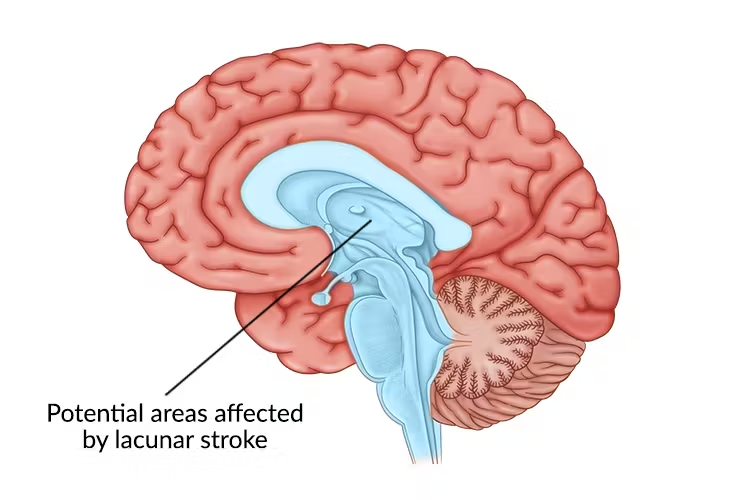An embolic stroke, also known as an embolic cerebral infarction, is a type of ischaemic stroke that occurs when a blood clot or other debris forms in one part of the body and travels to the brain, blocking the flow of blood to a specific area. This type of stroke is responsible for approximately 15-20% of all ischaemic strokes. In this article, we will discuss the causes, symptoms, diagnosis, treatment, and prevention of embolic stroke.

Causes of Embolic Stroke
An embolic stroke is caused by the formation of a blood clot or other debris in one part of the body, which then travels to the brain and blocks the flow of blood to a specific area. The most common sources of emboli include:
1. Atrial Fibrillation: Atrial fibrillation is a type of irregular heartbeat that can cause blood clots to form in the heart.
2. Myocardial Infarction: A myocardial infarction, also known as a heart attack, can cause blood clots to form in the heart.
3. Cardiac Valve Disease: Cardiac valve disease, such as mitral stenosis or aortic stenosis, can cause blood clots to form in the heart.
4. Carotid Artery Disease: Carotid artery disease, such as carotid stenosis or carotid occlusion, can cause blood clots to form in the carotid arteries.
5. Deep Vein Thrombosis: Deep vein thrombosis, also known as DVT, is a blood clot that forms in the deep veins of the legs.
Symptoms of Embolic Stroke
The symptoms of an embolic stroke can vary depending on the location and size of the affected area. Some common symptoms include:
1. Sudden Weakness or Numbness: Weakness or numbness in the face, arm, or leg on one side of the body.
2. Sudden Confusion or Trouble Speaking: Difficulty speaking or understanding speech.
3. Sudden Trouble Seeing: Blurred vision or loss of vision in one eye.
4. Sudden Severe Headache: A severe headache that comes on suddenly.
5. Sudden Dizziness or Loss of Balance: Dizziness or loss of balance.
Diagnosis of Embolic Stroke
Diagnosing an embolic stroke typically involves a combination of physical examination, medical history, and diagnostic tests. Some common diagnostic tests include:
1. Computed Tomography (CT) Scan: A CT scan uses X-rays to create detailed images of the brain.
2. Magnetic Resonance Imaging (MRI): An MRI uses magnetic fields and radio waves to create detailed images of the brain.
3. Angiography: Angiography uses X-rays and a contrast agent to create detailed images of the blood vessels in the brain.
4. Electroencephalogram (EEG): An EEG measures the electrical activity of the brain.
Treatment of Embolic Stroke
Treatment for an embolic stroke typically involves a combination of medications and medical procedures. Some common treatments include:
1. Thrombolytic Therapy: Thrombolytic medications, such as tissue plasminogen activator (tPA), can help dissolve the blood clot and restore blood flow to the brain.
2. Antiplatelet Agents: Medications such as aspirin or clopidogrel can help prevent further blood clots from forming.
3. Anticoagulants: Medications such as warfarin can help prevent further blood clots from forming.
4. Surgery: Surgery may be necessary to remove the blood clot or repair damaged blood vessels.
Prevention of Embolic Stroke
Preventing embolic stroke requires managing risk factors and making lifestyle changes. Some common prevention strategies include:
1. Blood Pressure Control: Managing high blood pressure through lifestyle changes and medication.
2. Cholesterol Management: Managing high cholesterol through lifestyle changes and medication.
3. Diabetes Management: Managing diabetes through lifestyle changes and medication.
4. Smoking Cessation: Quitting smoking to reduce the risk of embolic stroke.
5. Exercise Regularly: Regular physical activity can help lower blood pressure and cholesterol levels.
Conclusion
An embolic stroke is a type of ischaemic stroke that occurs when a blood clot or other debris forms in one part of the body and travels to the brain, blocking the flow of blood to a specific area. By understanding the causes, symptoms, diagnosis, treatment, and prevention of embolic stroke, individuals can take steps to reduce their risk and improve their overall health. If you or someone you know is experiencing symptoms of an embolic stroke, call emergency services immediately.

